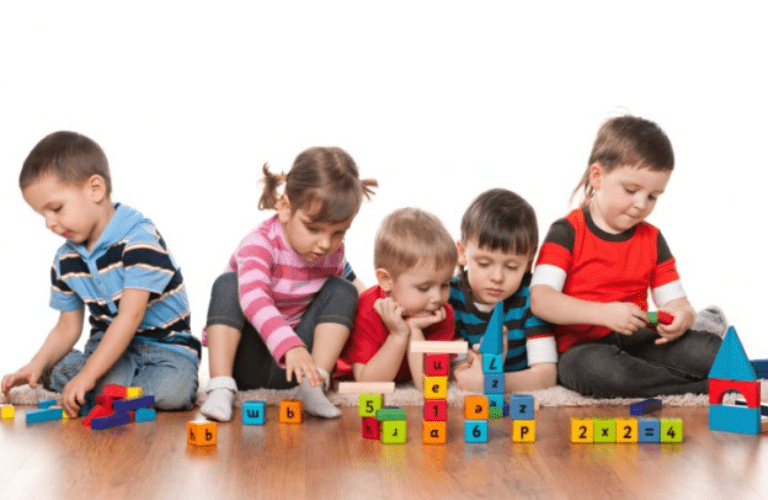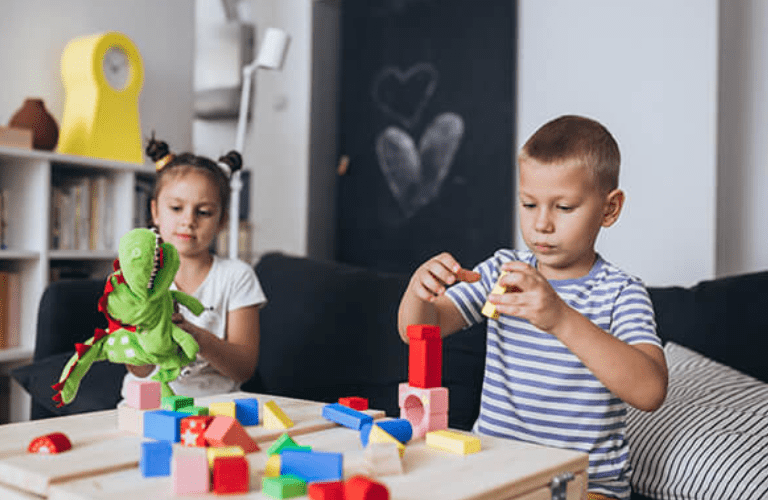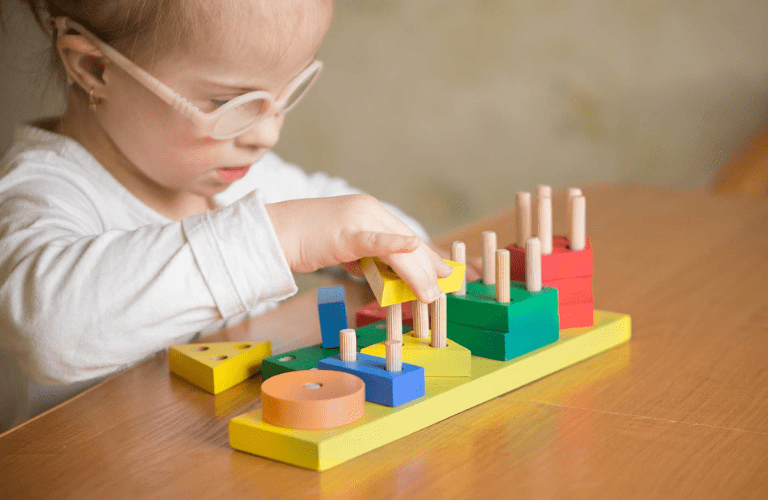
Introduction: Exploring the World of Visual Toys
Visual skills play a crucial role in the development and growth of children. These skills foster cognitive learning and have an impact on daily activities. A child who has developed good visual skills can be an achiever in academics, sports, social performance, and other fields later in his life.
In this blog, we’ll walk you through options designed for improving visual perception, hand-eye coordination, spatial awareness, and other skills. From colorful puzzles to interactive games, we will explore the power of play and discover a wide range of engaging toys that stimulate a child’s visual development.
Types of Visual Skills
To understand the effect of visual skill development we should first know what are the different types of visual skills:
- Visual perception: It is the ability to comprehend and make sense of visual information
- Visual discrimination:It is the ability to distinguish between similarities and differences.
- Visual Memory:The ability to remember and recall visual information is visual memory.
- Visual Tracking: Visual tracking is the ability to follow and track moving objects or patterns.
- Visual Motor Integration: VMI is the capacity to synchronize visual perception with fine motor skills like hand-eye coordination.
- Visual-Spatial Skills: The ability to comprehend and mentally manipulate visual representations of space, such as maps or puzzles.
- Visual Attention: The ability to concentrate or focus on visual stimuli while screening out distractions.
- Visual Closure: It is the ability to recognize and grasp visual information that is incomplete or partially veiled.
- Visual Sequencing: The ability to notice and comprehend the order or sequence of elements is visual sequencing.
- Visual Imagery: The ability to visualize objects, concepts, or scenarios.
Toys That Build Visual Skills

Playtime is the best time that can help in the development of visual skills in children. Certain types of toys provide engaging experiences that promote visual perception, spatial awareness, and cognitive abilities. Some of the examples are:
Building blocks and construction sets
These toys encourage children to explore shapes, sizes, and spatial relationships, enhancing their visual perception and problem-solving skills.
Puzzles and jigsaw puzzles
Piecing together puzzles challenge children’s visual discrimination, pattern recognition, and spatial reasoning. They also promote sequencing and story formation.
Magna-Tiles and other magnetic building toys
Tiles and similar toys allow children to experiment with shapes and structures, fostering spatial awareness and creativity.
Shape sorters and matching games
Children improve their visual discrimination and cognitive ability by sorting and matching different shapes.
Art supplies
Coloring books, drawing materials, and art activities provide opportunities for fine motor skill development and visual expression. The children learn how to present their ideas in the form of drawings. Sometimes these drawings play a crucial role in understanding child emotions.
Benefits of playing with toys that develop visual skills
Playing with toys that encourage visual ability development has various advantages for youngsters.
Improves Fine Motor Skills
Kids need to understand how to move and operate various shaped pieces, both large and small, as well as have fine motor control to ‘click’ them into place while playing with constructing toys. This improves motor strength, visual skills, and motor planning.
Enhance Visual Perception
Toys such as Building blocks and puzzles require children to visually analyze and distinguish between various shapes, colors, and patterns. This increases their visual perception abilities, allowing them to more accurately recognize and understand visual information.
Boosts Spatial Awareness
Building blocks need recognition of a pattern that is a crucial part of making reading ready. They need to understand the design and put the blocks in the proper sequence to get perfection. This helps them to learn to manipulate objects in space, strengthening their spatial awareness and problem-solving skills.
Cognitive Learning
Engaging with games such as puzzles, shape sorter, and matching games stimulates cognitive learning in children. They learn how to categorize, classify, or segregate things by visualizing. They also foster critical thinking and logical reasoning.
Encourage Creativity & Innovation
Every time children play with the toys they come up with the building of new structures using their creativity and innovation. They can construct unique structures, create visual art, and explore endless possibilities, nurturing their creative thinking abilities.
Induces Focus & Patience
To be effective with their designs, children must work slowly and attentively. This improves their ability to focus and pay attention for extended periods. It also instills the value of patience.
Visual Toys for Different Age Groups

Different-aged children need different toys for playing. They have distinct demands for cognitive, sensory, and motor development. From infants to adolescents, the range of toys that engage and stimulate young minds at each stage of their growth is distinct. Some of the age-relevant toys are as follows:
Visual Toys for Infants:
Visual toys with high-contrast patterns and colors are especially good for infants. Black & White mobiles, rattles with bright contrasting colors, and soft plush toys with simple facial features are all wonderful options. These toys assist in stimulating their growing vision as well as encouraging focus and tracking abilities.
Visual Toys for Toddlers:
Toddlers are now ready to experiment with increasingly complex visual experiences. Shape, color, and texture-based toys can be both entertaining and informative. Shape sorters, nesting blocks, and picture puzzles are among examples. These toys help them improve their hand-eye coordination, spatial awareness, and shape recognition.
Visual Toys for Preschoolers:
Preschoolers thrive on imaginative play and inventiveness. For this age group, visual toys that cultivate narration, pretend play, and problem-solving are great. Dollhouses, construction sets, coloring books, and markers help to develop their visual perception, fine motor skills, and cognitive ability.
Toys for School-Age Children:
Toys for school-age children that challenge their visual perception and critical thinking skills are beneficial. Construction sets, building blocks, and science kits with visual instructions help children develop spatial reasoning and logical thinking skills. Puzzles, board games, and optical illusions all help to improve problem-solving skills and attention to detail.
Toys for Adolescents:
Visual toys that encourage creativity and self-expression are very appealing to adolescents. Sketchbooks, paints, and sculpting tools allow students to explore their artistic abilities. Cameras and photography kits can foster visual storytelling and capture their unique viewpoint on the world.
Visual Toys are Specially-abled children

Specially-abled children, including those with Autism, Cortical Visual Impairment (CVI), and blindness, can benefit from special toys that enhance their ability to recognize and interact with their surroundings, fostering greater independence as they transition into adulthood. These toys are specifically designed to cater to their unique needs, providing sensory stimulation, cognitive development, and practical skills that can make their daily lives a little easier.
Visual Toys for Autistic Children:
Visual toys that provide sensory stimulation and stimulate communication and social contact can assist autistic youngsters. Toys such as interactive light panels, tactile puzzles, and visual storybooks with clear graphics encourage sensory exploration, fine motor skills, and social engagement while catering to their individual abilities and interests.
Visual Toys For Children with CVI:
Children with Cortical Visual Impairment (CVI) can benefit from specifically developed visual toys that meet their specific visual demands while also encouraging sensory engagement. These toys are designed specifically to improve kids’ visual perception and boost visual growth.
Toys for Blind Children:
Toys for blind children are designed to stimulate their other senses while still adding tactile components. Sensory novels with raised textures (Braille Script), sound-emitting toys, and musical instruments designed for touch and auditory exploration are all examples. Sensory development, fine motor abilities, auditory discrimination, and spatial comprehension are all aided by these toys.
Tips for choosing toys that develop visual skills
Finding the perfect toys to help develop these critical skills can be difficult. The right toy can stimulate imagination, motivate movement, and assist develop several core developmental skills. Here we are sharing some tips that will help you in selecting the best toy for your child
Age- Appropriate
Select the toy as per the age of the child as it will foster development and the child will find it interesting to play with. For this, age suitability is mentioned on the toy packaging. It is critical to emphasize the necessity of keeping toys age-appropriate, as toys for smaller age groups will not assist children gain new abilities, and children may not be ready to get the most out of the experience if they are rushed to toys for older age groups.
Variety of Visual Elements
Look for toys that offer a variety of visual elements such as colors, shapes, patterns, and textures. This diversity engages and stimulates different aspects of visual perception. Such toys will help in learning more about colors, shapes, patterns, and sorting of different elements which are necessary for their development.
Choose them with the Intention
Do not look for the toy by popularity instead select the one which suits your child’s requirements. Further, look for its usage, engagement it creates, child interest, and so on.
Open-ended Play
Choose a toy that allows the child to use imagination to create or develop a new invention. It will increase interest and curiosity in the child whenever he will play with the toy.
Safety Consideration
Safety measures are of the utmost importance when it comes to kids. Ensure that the toys are not made up of any toxic or hazardous material. Moreover, prioritize toys that meet safety standards, are durable, and are non-toxic.
Conclusion
The art of play is a way to promote and develop a child’s visual development. Children can improve their visual perception, spatial awareness, hand-eye coordination, and cognitive ability through carefully selected toys and enjoyable play experiences. Toys with several visual aspects, hands-on manipulation, and open-ended play can give excellent learning opportunities while fostering creativity and problem-solving skills.
Always ensure you select toys as their age so they learn and enjoy their playtime. So, embrace the power of play and equip your child with the tools needed to realize their visual potential, paving the path for a happy and prosperous future.
MMJ Eye Institute: Your Partner in Health Care
According to research, 1 in 6 children experiences vision-related problems. Our Pediatric Ophthalmology and Strabismus Service offers comprehensive primary care, diagnosing and managing vision issues in infants and children, including common childhood vision disorders.
FAQs
-
What are the benefits of toys for kids?
Toys help in the development of different types of skills in children. The visual toys engage the kids in different activities that initiate cognitive learning, enhance their imagination and creativity, and make them better learners in the future.
-
How do toys help brain development?
A child’s cognitive development includes the ability to comprehend information to grasp how the world works. Toys and play provide realistic chances for practicing various thinking skills including mimicking, logical reasoning, problem-solving, and mental imagery.
-
What is toy-based learning Pedagogy?
Toy-based learning is a form of pedagogy that emphasizes toys are not just for recreation but also serve as valuable learning tools. The early years of a child’s life are crucial for brain development, and toys play a significant role during this period. They aid in the development of various skill sets that prove beneficial in the future. Toys facilitate learning and provide opportunities for cognitive, physical, and social development, setting a strong foundation for a child’s growth and learning journey.


